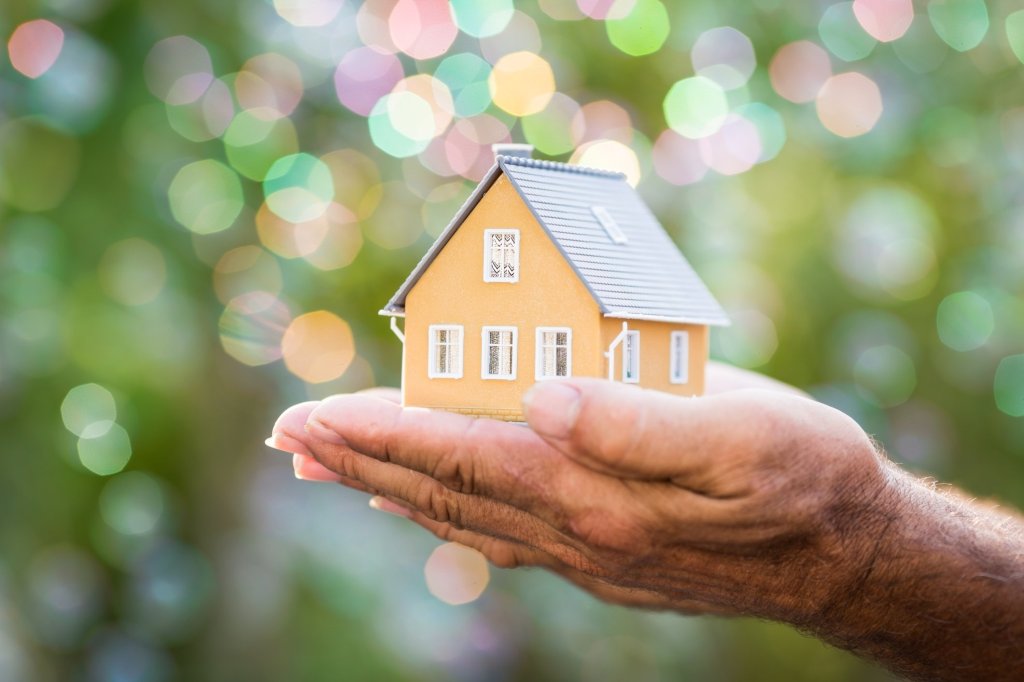
Home Modifications for Aging in Place: 50 Expert Tips and Quotes on Home Modifications That Support Aging in Place
General Home Modification Tips

- Pay attention to aging needs and difficulties. “Particularly if an aging parent lives alone, other family members may not be aware of the struggles their loved one is having. Make a point when visiting to observe how Mom or Dad gets around the house. Input from the doctor and other health care professionals may give you insight on your parents’ abilities and areas of difficulty. If you have concerns, it is probably time to consider an assessment. Find a contractor who specializes in home modification and who will coordinate with their health care team.” – Chris Moore, Home Modifications Increase Senior Safety, Angie’s List; Twitter: @AngiesList
- Form a plan. ”A good first step in making your home more age-friendly is to do an assessment. Go through your house, room-by-room, looking for problem areas like potential tripping or slipping hazards, as well as areas that are hard to access and difficult to maintain.” –Jim T. Miller, How to Create a Safe ‘Aging-in-Place’ Home, The Huffington Post; Twitter: @HuffPost
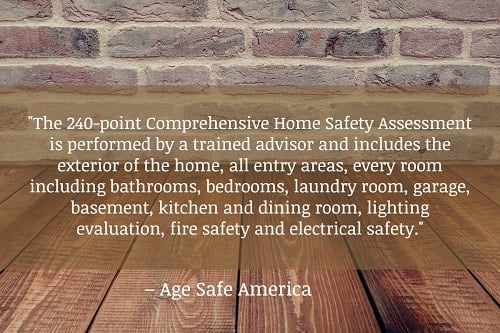 3. Consider getting a professional assessment of your home. “The 240-point Comprehensive Home Safety Assessment is performed by a trained advisor and includes the exterior of the home, all entry areas, every room including bathrooms, bedrooms, laundry room, garage, basement, kitchen and dining room, lighting evaluation, fire safety and electrical safety. Afterwards a complete summary is prepared with recommendations for fall prevention and home safety. If necessary modifications are suggested, the advisor will be able to confidently refer pre-screened and vetted providers in your area.” – Senior Home Safety, Age Safe America; Twitter: @agesafeamerica
3. Consider getting a professional assessment of your home. “The 240-point Comprehensive Home Safety Assessment is performed by a trained advisor and includes the exterior of the home, all entry areas, every room including bathrooms, bedrooms, laundry room, garage, basement, kitchen and dining room, lighting evaluation, fire safety and electrical safety. Afterwards a complete summary is prepared with recommendations for fall prevention and home safety. If necessary modifications are suggested, the advisor will be able to confidently refer pre-screened and vetted providers in your area.” – Senior Home Safety, Age Safe America; Twitter: @agesafeamerica
- Clear the excess. Any unnecessary furniture or rugs should be removed. “The more space you allow in each of your rooms, the better. Make sure there are clear pathways and plenty of space to walk in without bumping into anything, especially in the rooms you spend a lot of time in.” – Kristen Hicks, 15 Home Modifications to make Aging-in-Place Safe, Senior Advisor; Twitter: @SeniorAdvisor_
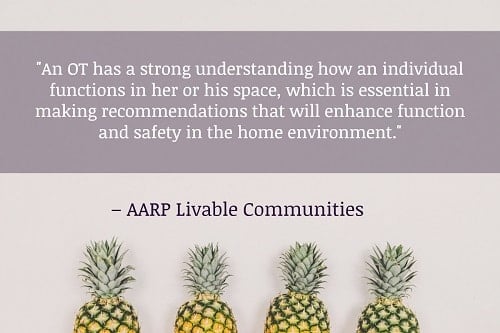
- Talk to your Occupational Therapist about remodels. If you’re already working with an occupational therapist for any reason, there’s a good chance they’ll be able to help you get started. “An OT has a strong understanding how an individual functions in her or his space, which is essential in making recommendations that will enhance function and safety in the home environment. This person-centered focus helps ensure that any modifications made to a home will meet both current and future needs. Such assessments save money in the long run by helping to avoid mistakes in product selections and design solutions.
- Call in a Specialist. “[Another] thing to consider when remodeling a home to accommodate seniors is that there are contractors available that are specifically trained to do aging in place home remodeling. They are known as Certified Aging in Place Specialist, or CAPS. CAPS are certified after a three-day course that is available through the National Association of Homebuilders. […] If you are looking to make changes to a home so that your elderly parents can age in place, consider finding someone to help you who is a Certified Aging in Place Specialist. This way you know that you are in good hands because sometimes the renovations required to accommodate the elderly are no easy task and instead take a lot of time and effort.” 3 Tips for Aging in Place Home Remodeling, Senior Caring; Twitter: @myseniorcaring

- Create at least one no-step entry into the home. “It’s definitely a good idea to have at least one of these. But there’s a host of related issues that go beyond the construction work. Outside, you’ll probably want a covered entry to protect you from the elements. And you need good drainage since the doorway will be level with the walking surface just outside the door. Once inside, you’ll need space for maneuvering.
- Pocket doors may make mobility between rooms possible. Not only will the door be out of the way when opened, the hinge will prevent any catching on wheelchairs. “For your existing home, Aging in Place may merely need to widen some doorways, and pocket doors may be useful to you when a swinging door just won’t work.” – Wider Doors and Hallways, Senior Home Remodel
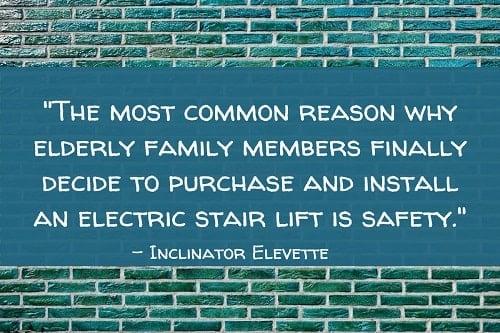
- Electric Stair Lifts. “The most common reason why elderly family members finally decide to purchase and install an electric stair lift is safety. Sometimes, one in a pair of elderly parents will become debilitated by arthritis or muscle atrophy, and the other pair is not strong enough to assist them up the stairs anymore. Other times, elderly people cite their general fear of falling down the stairs when they’re at home alone, and no one would be able to hear them, or help them. The lift provides them with the sense of security they need when they travel between the floors of the house.” – The Benefits of an Electric Stair Lifts for the Elderly, Inclinator Elevette; Twitter: @InclinatorElvet
- Elevators add more than just convenience and safety. “Having a home elevator installed can add significant value to your home, making it a profitable investment. Many prospective homebuyers today gravitate toward homes featuring elevator access. This is because many buyers are looking to the future where accessibility may become a big deal for them, should their mobility diminish. Even if you’re not currently benefitting from every aspect of the elevator, it can significantly increase your home’s resale value.
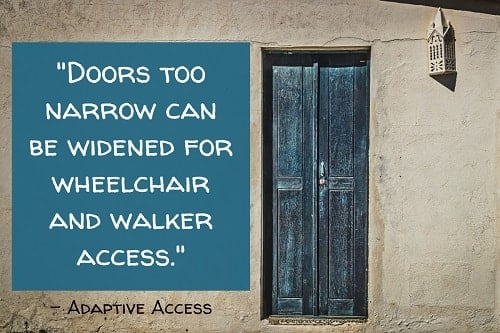
- Find a contractor to widening doors and hallways. “Doors too narrow can be widened for wheelchair and walker access. We remove the existing door unit and trim. We may have to relocate the light switch. Cut out the wallboard to accommodate the wider door. Cut out the studs to widen the framed opening. Depending on the door size it may be possible just to remove the cripple studs. We then install a new wider door unit and trim. Paint all new work and repair the finished flooring. You’ll need flooring material to match. With experience and proper tools, two good carpenters will complete this in about 8 hours.” – Home Changes, Adaptive Access; Twitter: @adaptiveaccess
- Combine your essential rooms onto the first floor. You may not want to move out of your two-story home, but you may want to consider rearranging the room configuration. “Move downstairs. To make a home as easy as possible to navigate, consider moving the master bedroom downstairs. When possible, opt for open spaces over small rooms and narrow hallways.” – Karen Nitkin, Eight Ways to Future-proof your House for Retirement, The Baltimore Sun; Twitter: @baltimoresun
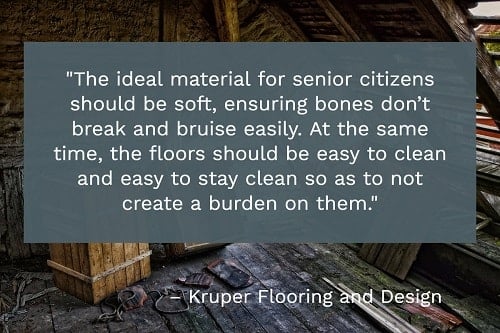 13. Install new floors to prevent falls, slips and trips. “In order for [aging seniors] to live somewhat independently, we have to make some changes to their homes. Part of the changes we have to make is to the flooring; balance can be tricky as we age, and comfort and safety become our top priority. The ideal material for senior citizens should be soft, ensuring bones don’t break and bruise easily. At the same time, the floors should be easy to clean and easy to stay clean so as to not create a burden on them. […]Rubber floors are both very soft and naturally slip resistant, along with being fire resistant as well. When treated with water soluble wax, the rubber flooring becomes water and stain resistant, making it extremely easy to maintain.” – Flooring For Seniors Aging In Place, Kruper Flooring and Design
13. Install new floors to prevent falls, slips and trips. “In order for [aging seniors] to live somewhat independently, we have to make some changes to their homes. Part of the changes we have to make is to the flooring; balance can be tricky as we age, and comfort and safety become our top priority. The ideal material for senior citizens should be soft, ensuring bones don’t break and bruise easily. At the same time, the floors should be easy to clean and easy to stay clean so as to not create a burden on them. […]Rubber floors are both very soft and naturally slip resistant, along with being fire resistant as well. When treated with water soluble wax, the rubber flooring becomes water and stain resistant, making it extremely easy to maintain.” – Flooring For Seniors Aging In Place, Kruper Flooring and Design
- Upgrade the lighting throughout the home. Changing light bulbs is often a risk. The less you have to reach up or climb up for replacements, the better. One simple modification you can make to your home that isn’t too pricey is switching to LED bulbs. “LEDs are notable for being extremely long-lasting products. Many LEDs have a rated life of up to 50,000 hours. This is approximately 50 times longer than a typical incandescent, 20-25 times longer than a typical halogen, and 8-10 times longer than a typical CFL. Used 12 hours a day, a 50,000 bulb will last more than 11 years. Used 8 hours a day, it will last 17 years!” – Everything you want to know about LED lighting,, Bulbs.com: The LED Authority; Twitter: @BulbsCom
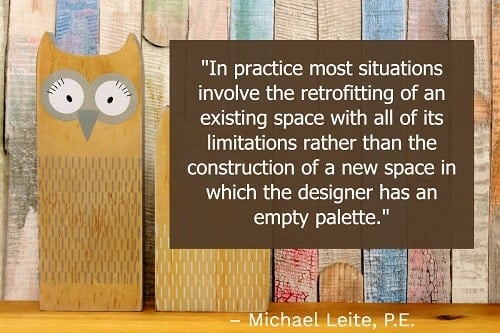 15 Consider a universal design. “Universal design has been defined as building environments that are accessible by anyone regardless of their physical limitations or disabilities. Much of the universal design concept has been codified in the Americans with Disabilities Act of 1990. In practice most situations involve the retrofitting of an existing space with all of its limitations rather than the construction of a new space in which the designer has an empty palette.” – Michael Leite, P.E., Applying Universal Design Concepts, Retirement Living; Twitter: @proaging
15 Consider a universal design. “Universal design has been defined as building environments that are accessible by anyone regardless of their physical limitations or disabilities. Much of the universal design concept has been codified in the Americans with Disabilities Act of 1990. In practice most situations involve the retrofitting of an existing space with all of its limitations rather than the construction of a new space in which the designer has an empty palette.” – Michael Leite, P.E., Applying Universal Design Concepts, Retirement Living; Twitter: @proaging
- Find a more suitable bed. “At the heart of the bedroom is one essential piece of furniture, the bed. Again, aging in place requires planning ahead, so as you think about your bed, keep in mind that sleep patterns often change with aging and many older people find it more difficult to fall asleep and stay asleep. For this reason, the bedroom remodel may be the perfect time to replace an older bed and upgrade to one that will be better suited for aging in place. While a hospital bed can provide certain benefits (including the ability to be raised and lowered as needed), you should consider the alternatives, too. An adjustable bed, for example, looks like a standard bed when it’s flat, but it allows you to raise and lower both the head and the foot to obtain your most comfortable, customized sleep position. Some adjustable beds come with massage features, wireless hand controls, and the ability to adjust the firmness of the mattress, too.” – Important Updates and Modifications for the Bedroom, Aging in Place

- Smooth exterior walkways. “Most outdoor falls can be attributed to uneven surfaces and walkways that are poorly maintained. With this in mind, keeping your loved one’s walkways safe is of the utmost importance. Shrubbery and trees should be kept trimmed and off the walkway. If your loved one has a walkway lined with gravel or bark, consider having a curb installed to keep it from finding its way onto the walkway. Finally, any cracks, lips or moss should be removed and fixed immediately.” – 5 Exterior Modifications for Aging in Place, Smart Cells; Twitter: @SmartCells_USA
- Lever style door knobs can prevent undue struggles. “Levers are usually easier to grip than round doorknobs, and they don’t require a twisting motion. That can be especially helpful for people who have arthritis or other conditions that limit motion. You can find lever-style knobs at home improvement stores starting around $20 each. Changing doorknobs can be a do-it-yourself task, or you might hire a handyman.” – Margarette Burnette, Aging in Place: Home Renovations for Seniors, Huffington Post; Twitter: @HuffPost
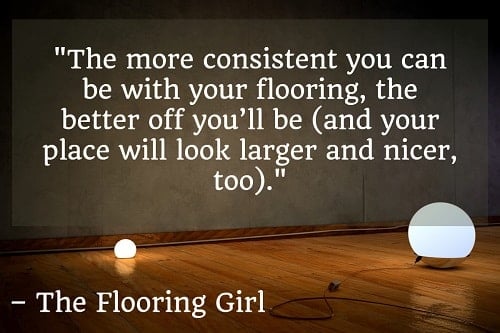
- Opt for floor consistency throughout the home. “[Aim for] Fewer and smoother transitions across flooring surfaces. The more consistent you can be with your flooring, the better off you’ll be (and your place will look larger and nicer, too). The reason that this is important is because you want to minimize the number of transitions (i.e. saddles or thresholds) as these can become tripping hazards. Many older adults drag their feet a bit and/or don’t lift them as much. When you do have transitions, try to minimize the height difference, and if possible make them flush across rooms. Note: If you have hardwood flooring with saddles at the doors, you may want to consider removing these as an extra safety precaution.” – The Flooring Girl, What is the safest flooring for aging in place?; Twitter: @DebbieGartner
- Make it brighter. “By age 75, most people require twice as much light as the normal recommended standard, and nearly four times as much as a 20-year-old, to see satisfactorily (Dementia Services Development Center – The Importance of Lighting). This is especially true for people with dementia. Dark spots or areas in a room can appear ominous and confusing to the brain. Providing nice, bright spaces will help ease the mind and provide a clearer understanding of surroundings.” – Why Lighting is so Important When designing for Dementia Patients, Progressive AE; Twitter: @ProgressiveAE
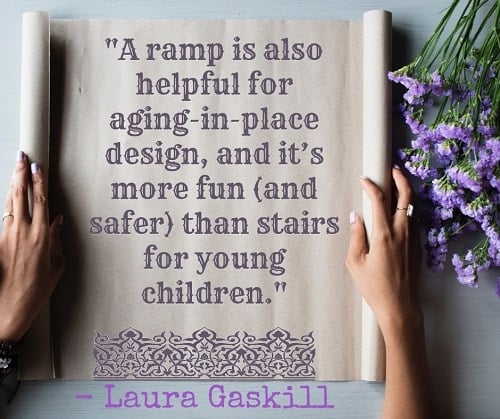
- Build a ramp in addition to, or on top of, your exterior stairs. “Wheelchair accessibility may be the most obvious reason, but it’s far from the only one. A ramp is also helpful for aging-in-place design, and it’s more fun (and safer) than stairs for young children. With proper planning, a ramp can fit into indoor and outdoor spaces just as well as a traditional staircase, providing visual interest, function and fun. If you plan to sell your home eventually, a well-designed ramp could even make your home more appealing to a wider range of buyers.” – Laura Gaskill, How to Add an Indoor or Outdoor Ramp, Best Bath; Twitter: @bestbath
- Remember wheelchair height for entrances, as well. “For exterior doors in particular, look into installing a peephole or small view panel in the door at an accessible height. If you choose to install a window or view panel though, make sure that it is far enough away from the door handle to not create a potential security issue. Another alternative could be to install an intercom to enable identification of visitors.” – Michael Sledd, Home Remodeling People with Disabilities: What you Need to Know, Expertise: Twitter: @ExpertiseHQ
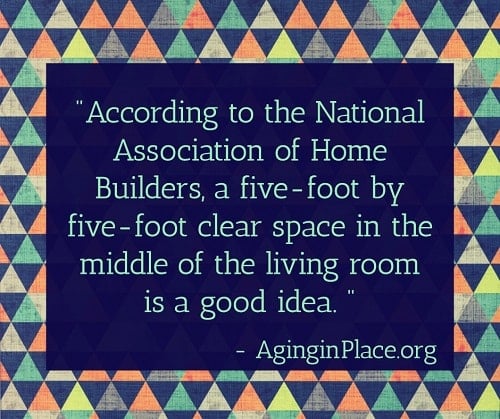
- Leave the living room as open as you can. “According to the National Association of Home Builders, a five-foot by five-foot clear space in the middle of the living room is a good idea. That leaves enough room to navigate a wheelchair and get turned around properly with a walker—an essential, since backing up with a walker can quickly become a fall hazard. Again, aging in place requires addressing such issues now, since things can change quickly as a person ages. With that in mind, it’s much better to clear that space and have it already open, so you don’t have to worry about creating it when you need it later.” – Aging in Place? Consider a Living Room Update for Safety and Security, Aging in Place
- Make sure there is access to a phone in each room. “Place phone extensions in every room on a low surface, have the senior carry a cell phone in his or her pocket, or wear or emergency contact system with a panic button.” – Home Safety Checklist: 10 Steps to Make a Home Safer, Money Geek; Twitter: @money_geek
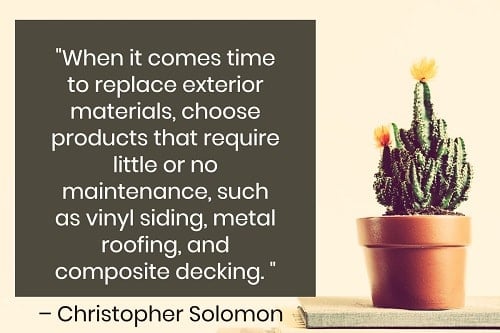
- Less upkeep means fewer struggles. Go Low Maintenance “When it comes time to replace exterior materials, choose products that require little or no maintenance, such as vinyl siding, metal roofing, and composite decking. These products will offer dual benefits of good looks and lasting performance. You can reduce landscape maintenance, too, by choosing native plants and installing a time-activated sprinkler system.” – Christopher Solomon, Staying Put: 10+ Improvements to Get your House Ready for Your Next Age, Bob Vila; Twitter: @BobVila
Home Modifications for the Bathroom
- Ditch the traditional tub. “A senior opting to age in place also should consider home modifications for the bathroom, particularly the bathtub. One option is to replace the bathtub with a walk-in shower, which provides much easier (and safer) entry and exit than a bathtub.” – RKT, 5 Must-Have Home Modifications for Seniors Aging in Place, Assisted Living Today; Twitter: @seniorcaring
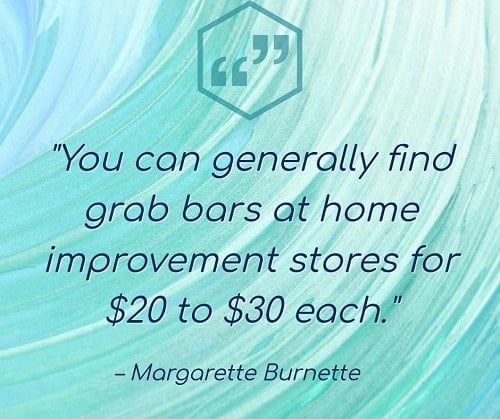
- Even if you keep your standard tub, add grab bars. “These heavy bars can help prevent falls because of slippery tubs, shower stalls and floors. You can generally find grab bars at home improvement stores for $20 to $30 each. The cost to have them professionally installed runs about $100 each, materials included.” – Margarette Burnette, Aging in Place: Home Renovations for Seniors, Nerdwallet; Twitter: @NerdWallet
- Take a look at a walk in tub. “An often overlooked benefit of walk in tubs is they easily operate as a stand up or sit down shower as well as a deep soaking tub. Quality providers will supply a faucet set with an extendable showerhead. This component can also be hung on a riser rod so the bather can chose to use it as a stand up shower or in a seated position. For adult children with live-in parents, this can be effective to have a dual-purpose walk in tub and shower capacity built-in.” – 7 Benefits of a Walk in Tub, Age in Place; Twitter: @aging_in_place
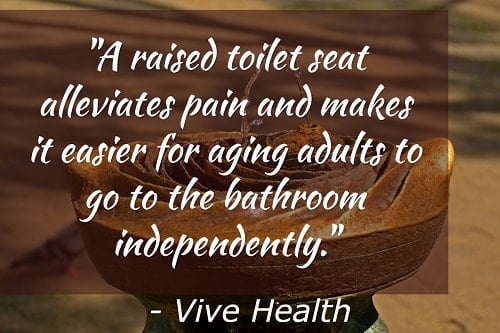
- Replace the toilet. “A toilet seat for elderly loved ones prevents embarrassment from needing assistance to go to the bathroom. And for those recovering from injury, suffering from chronic joint pain, or hindered by limited mobility, sitting on the toilet can be painful. A raised toilet seat alleviates pain and makes it easier for aging adults to go to the bathroom independently. Raised toilet seats are secure, comfortable, and affordable.” – Amanda Ghosh, 10 Best Toilet Seats for Elderly Adults, Vive Health; Twitter: @vivehealthusa
- Keep essentials easily accessible. The harder an item is to get, the greater the chance of injury. “Open shelves can be attractive if they’re tidy. Putting glass-front doors on your cabinets lets you see what’s inside without opening them. Look for cabinets with easy-close doors and drawers with D-shaped pulls instead of knobs.” – Create a Beautiful Bathroom for the Ages, Consumer Reports; Twitter: @ConsumerReports

- Incorporate shower chairs. “[A shower chair] Helps to improve your safety. Do you ever feel afraid of taking a bath or shower? The possibility of falling is most likely on your mind and a shower chair or bath chair can help put your mind at ease. Using a shower chair or bath chair helps to increase safety by decreasing the chance of you falling by providing a secure area in a slippery shower or bath. Shower Chairs and Bath chairs are especially useful for those that are in wheelchairs, the elderly, or anyone who finds excessive movement painful or difficult. You do not want to risk falling and possibly ending up in the hospital and causing yourself pain”. – Advantages of Owning a Shower or Bath Chair, All Terrain Medical & Mobility, LLC.; Twitter: @allterrainmed
- Prep a bathroom to be wheelchair ready. “Install roll-in showers with multiple shower heads which are fixed, height adjustable and hand held. Make sure that the curtain is not held up by a tension rod, since grabbing it for support may result in a fall and install grab bars. Also, place rubber mats inside and outside the shower to avoid slipping and falling.

- Avoid ceramic tile. Don’t let the visual appeal and durability sway you. “Ceramic tile is cold, hard, and unforgiving in the event of a fall. It’s also relatively slippery when it’s wet, making it a poor choice for seniors’ bathrooms.” – Fay Wein, Best and Worst Bathroom Flooring for Aging in Place, Age in Place by the National Aging in Place Council; Twitter: @NAIPC
- Switch out the shower head. “A very convenient option for aging-in-place bathrooms is to install a handheld shower head. These make it easier for those who need to shower while seated or who may have limited mobility issues that restrain them from using the permanently installed shower head. Usually, these shower heads have a hose that is between three and six feet in length, which makes it easier to use them from various spots on the shower seat or in the shower (like near the grab bar).” – Top 5 Aging-in-Place Bathroom Remodeling Tips, Hatfield Builders and Remodelers; Twitter: @HatfieldBuilder
Home Modifications for the Kitchen
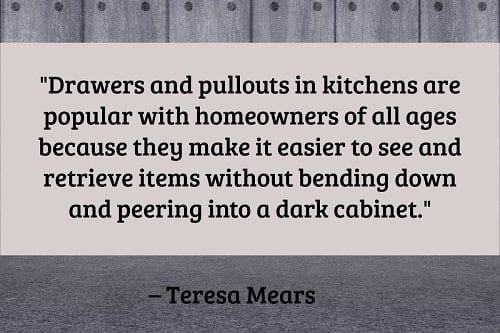
- Update your cabinets. “Replace kitchen cabinets with drawers and pullout shelves. Drawers and pullouts in kitchens are popular with homeowners of all ages because they make it easier to see and retrieve items without bending down and peering into a dark cabinet. ‘It brings the contents of the cabinet out into the light rather than you getting into the cabinet,’ Pekel says. Glass doors on upper cabinets help you remember what’s in them. When choosing knobs and pulls, move away from the small round knobs and choose something that’s easier to grab.” – Teresa Mears, How to Renovate Your House to Age in Place, US News; Twitter: @usnews
- Pay special attention to the kitchen stove. Look for additional convenience and safety features that can be helpful for those aging in place. “Electric cook top with level burners for safety in transferring between the burners, front controls and downdraft feature to pull heat away from user; light to indicate when surface is hot.” – Aging in Place Checklist, National Association of Home Builders; Twitter: @NAHBhome
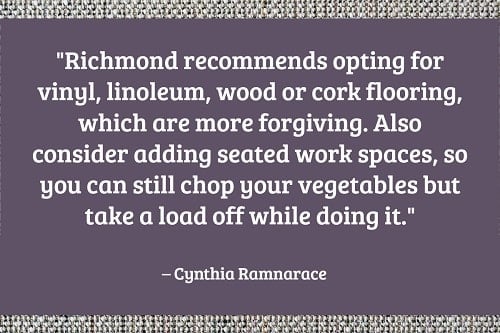
- Remember there is a lot of standing in the kitchen. “If you’re gearing up for a kitchen remodel, Richmond recommends you take a close look at your flooring. Tile is hard to stand on for long periods, especially in you have lower back or hip pain. Richmond recommends opting for vinyl, linoleum, wood or cork flooring, which are more forgiving. Also consider adding seated work spaces, so you can still chop your vegetables but take a load off while doing it.” – Cynthia Ramnarace, Aging in Your Own Space, AARP Bulletin; Twitter: @AARP
- Adjust the locations of major appliances. “Appliances can also be lowered or raised up to make using them more convenient and safe. Dishwashers raised off the floor make loading and unloading easier on the back and joints. Ovens can also be raised to avoid painful bending and to make it easier to see when the heat needs to be turned down.” – The Aging in Place Home: The Kitchen, Senior Matters; Twitter: @Senior_Matters
Financing a Senior Remodel
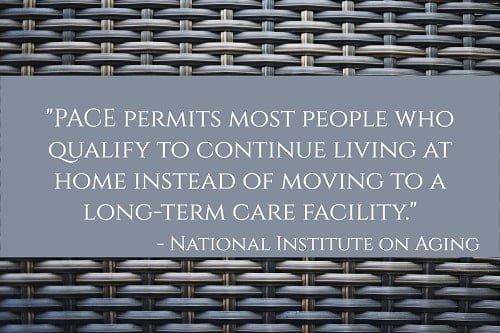
- Find out of your PACE is available in your state. “Some States have PACE, Program of All-Inclusive Care for the Elderly, a Medicare program that provides care and services to people who otherwise would need care in a nursing home. PACE covers medical, social service, and long-term care costs for frail people. It may pay for some or all of the long-term care needs of a person with Alzheimer’s disease. PACE permits most people who qualify to continue living at home instead of moving to a long-term care facility. You will need to find out if the person who needs care qualifies for PACE. There may be a monthly charge. PACE is available only in certain States and locations within those States.” – Paying for Care, National Institute on Aging; Twitter: @Alzheimers_NIH
- Factor in your deductions. “You can include the medical expenses amounts you pay for special equipment installed in a home, or for improvements, if their main purpose is medical care for you, your spouse, or your dependent. The cost of permanent improvements that increase the value of your property may be partly included as a medical expense. The cost of the improvement is reduced by the increase in the value of your property. The difference is a medical expense. If the value of your property is not increased by the improvement, the entire cost is included as a medical expense.” NAIPC, Home Modification Programs for Aging in Place Home Services, Home Advisor; Twitter: @HomeAdvisor

- Bear in mind that labor may not be covered by insurance, loans or grants. “While obviously, the cost of a modification ranges dramatically depending on the type of modification, what many people fail to realize is that costs can and should be thought of as having two components. The labor cost to make the modifications and the materials cost. This is an important distinction because materials for a modification can often be classified as durable medical equipment (DME) and if so, a different category of financial assistance becomes available. For example, when adding a stair lift (or stairglide) there is the cost of the chair and the sliding track and there is the cost to install it. The stair lift may be covered as durable medical equipment while the labor to install it most certainly would not be covered.” – How to Make & Pay for Home Modifications to Enable Aging in Place, Paying for Senior Care; Twitter: @PayForElderCare
- Consider a reverse mortgage. “A reverse mortgage is a loan that allows qualified homeowners who are age 62 or older to take part of their home’s equity as cash, either as a line of credit, or monthly or lump sum payment, or combo of a credit line and payments. But, unlike a standard mortgage loan, it requires no repayment until the borrower no longer occupies the residence. Borrowers with reverse mortgages are still required to pay the real estate taxes, homeowners insurance, flood insurance, and association dues.
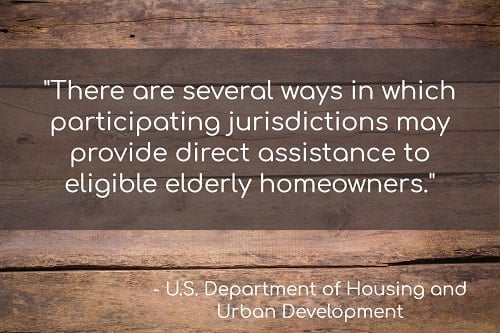
- Explore both public financing options. “There are several ways in which participating jurisdictions may provide direct assistance to eligible elderly homeowners. They may use direct grants, or establish loan programs. Loan programs themselves can take many forms: they may rely on deferred payment loans, in which case the principal would not have to be repaid until an event like the sale of the property and would be contingent upon the net proceeds of sale, or low-interest amortized loans, through which HOME funds will be recaptured for reuse in the future.” Home Repair/Modification Programs for Elderly Homeowners, U.S. Department of Housing and Urban Development; Twitter: @HUDgov
- Veterans have specific grants intended for their use. “SHA grants help Veterans with certain service-connected disabilities adapt or purchase a home to accommodate the disability. You can use SHA grants in one of the following ways:
- Adapt an existing home the Veteran or a family member already owns in which the Veteran lives
- Adapt a home the Veteran or family member intends to purchase in which the Veteran will live
- Help a Veteran purchase a home already adapted in which the Veteran will live” – Housing Grants for Disabled Veterans, S. Department of Veteran Affairs; Twitter: @DeptVetAffairs
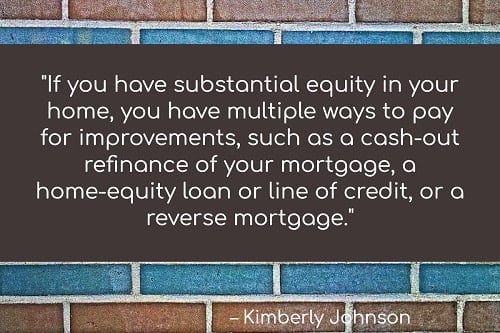
- Consider refinancing. “Tap your equity. If you have substantial equity in your home, you have multiple ways to pay for improvements, such as a cash-out refinance of your mortgage, a home-equity loan or line of credit, or a reverse mortgage.“ – Kimberly Johnson, 6 Tips to get your Home Ready for Aging in Place, Senior.com; Twitter: @SeniorOnline
- See if you qualify for a 203K loan. “If you don’t have enough equity in your home to borrow against, consider a Federal Housing Administration (FHA) 203K loan, says John Loyacono, a vice president and home loans manager for Bank of America in Plantation, Florida. Loyacono says any borrower with acceptable credit and a stable mortgage payment history can apply for the loan, however the property must meet certain requirements to qualify. Unlike a traditional FHA loan that mandates the financed home meet health and safety standards, homeowners can buy the property and renovate it with a single 203K loan. ‘The FHA 203K loan is meant for all types of repairs,’ Loyacono says. ‘Retrofitting a home for a handicap person is one of its greater uses.’ Borrowers can make as little as a 3.5 percent down payment, which is calculated on the combined purchase price and repair costs of the home, Loyacono says.” – Cynthia Wilson, How to Finance a Handicap Accessible Remodel, Angie’s List; Twitter: @AngiesList

- Title I Home and Property Improvement Loans. “HUD insures private lenders against loss on property improvement loans they make. The applicant must have the ability to repay the loan in regular monthly payments. Both large and small improvements can be financed. Search HUD’s list to find an approved Title I lender in your state. HUD does not lend money for property improvements. Loans on single family homes may be used for alterations, repairs and for site improvements.” – About Title I Home and Property Improvement Loans, U.S. Department of Housing and Urban Development; Twitter: @HUDgov
- Check local public housing agencies or banks for help. “Disabled Americans with very low incomes can be eligible for grants to remodel their homes if they can be sponsored by such nonprofits. Your local public housing agency or bank’s financial officer should be able to put you into contact with appropriate funding organizations. Many state listings are available on the HUD.org website. Financial details must be provided in conjunction with the application by the nonprofit organization on your behalf. Mental disabilities are included in this category of grant. Applicants must be able to provide 0.5% of the funds being granted.” – Zia Holte, Grants to remodel Homes for the Disabled, Sapling; Twitter: @Saplingdotcom
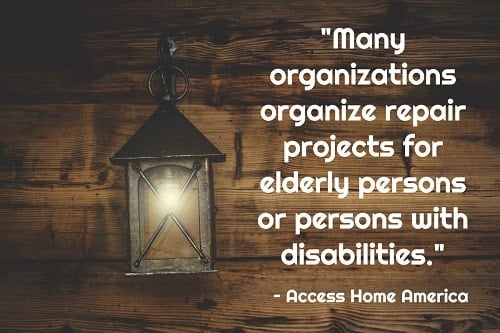
- Look into local charitable organizations. “Many organizations organize repair projects for elderly persons or persons with disabilities. Organizations may include your neighborhood association or community groups, churches, synagogues, Lutheran Social Services, Catholic Charities, Little Brothers of the Poor, Jaycees, Agency on Aging, senior centers, building trade unions, Boy Scouts of America, Girl Scouts of America, Kiwanis Clubs, sororities, fraternities, high school volunteerism, YMCA, Knights of Columbus, Rotary Clubs, Lion’s Clubs, B’nai B’rith, Masons, or 4H Clubs. Inquire about interest in a community project or see if you can propose one.” – Home Modification Funding Sources, Access Home America
- If renting, keep in mind the American with Disabilities act, and talk with your landlord. “The ADA requires that landlords make ‘reasonable accommodations’ for renters with disabilities. A reasonable accommodation is a change in rules, policies, or services that enable a person with a disability the equal opportunity to use and enjoy their home and any common spaces. A housing provider is required by law to accommodate a person with a disability, as long as the request doesn’t create an undue financial burden. Common accommodations include installing access ramps, providing a reserved parking spot at the front of a building, or allowing service animals in a unit where pets are not usually welcome. […] Landlords are responsible for paying for accommodations, though many common ones are free or low cost (providing larger print documents, designated a parking spot). Tenants are usually responsible for paying for structural modifications, unless the dwelling is listed as a federally assisted housing structure.” – Elizabeth Hayes, Landlord Responsibilities to Tenants with Disabilities, Rent Post; Twitter: @rentpost
More insights like this:
-

Helping an Aging Loved One Through Declining Mental Health
Read more: Helping an Aging Loved One Through Declining Mental HealthMental health challenges can impact anyone at any time of life. However, older adults tend to be more vulnerable to depression and other mental illnesses, on average, with 14% of adults aged 60 or older suffering from a mental disorder. “If you recognize or hear from a loved one that their day-to-day life is significantly…
-
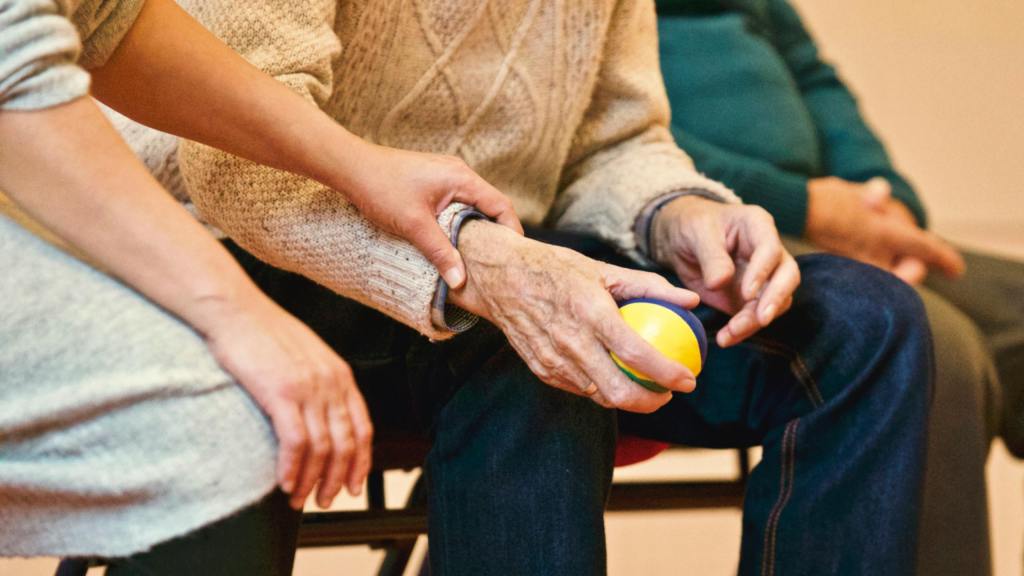
Delirium vs. Dementia: Causes, Symptoms, Treatments, and Preventative Measures
Read more: Delirium vs. Dementia: Causes, Symptoms, Treatments, and Preventative Measures5 Key Things Family Caregivers Need to Know About Delirium and Dementia Onset and Course Are Key Clues That Caregivers Should Watch Closely Delirium develops suddenly (hours or days) and often fluctuates; dementia progresses gradually over months or years. Acute changes in thinking or attention should trigger urgent medical evaluation. Delirium and Dementia…
-
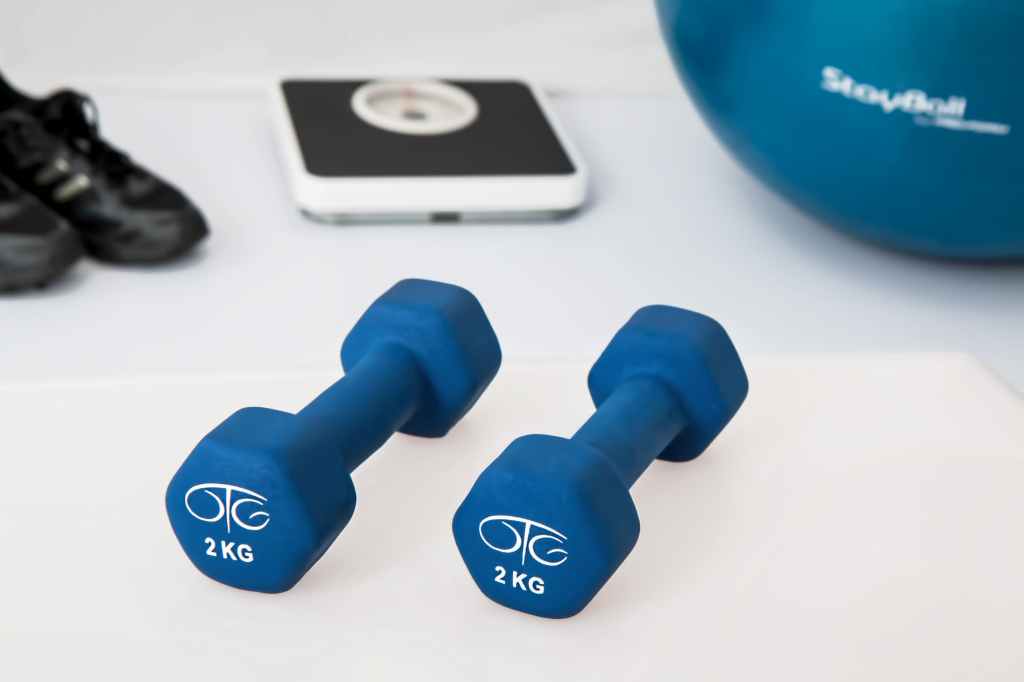
7 Immune System Booster Tips for Seniors
Read more: 7 Immune System Booster Tips for SeniorsThe immune system is the body’s first line of defense against viruses and infections, but the aging process can weaken the immune system. Throughout the COVID-19 pandemic, this became an increased concern for the caregivers of older or immunocompromised adults, as the risk of more severe symptoms and outcomes was much higher in these…